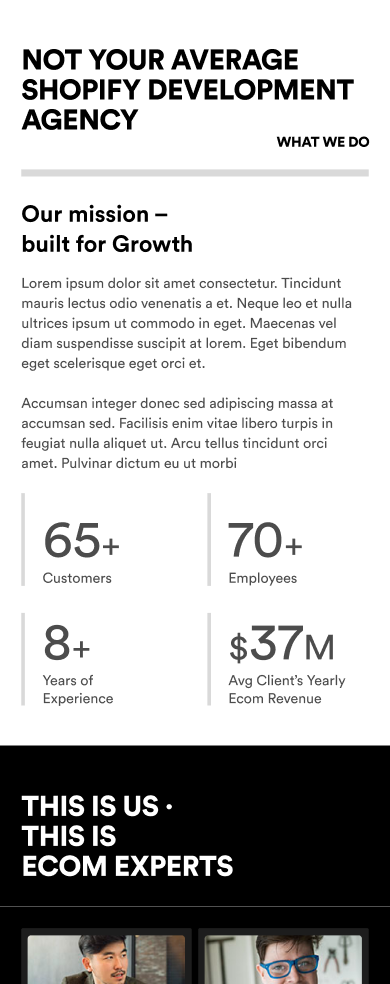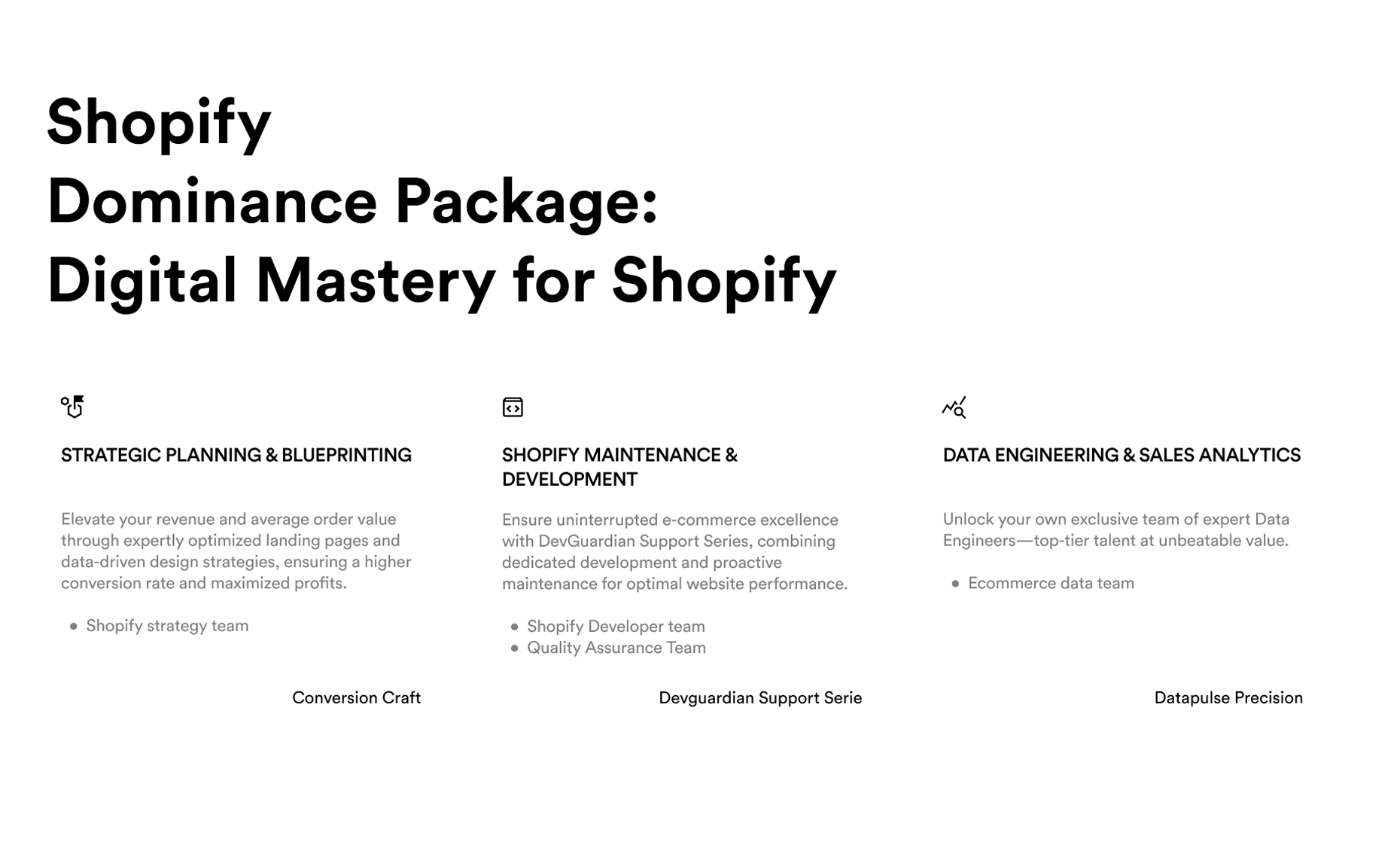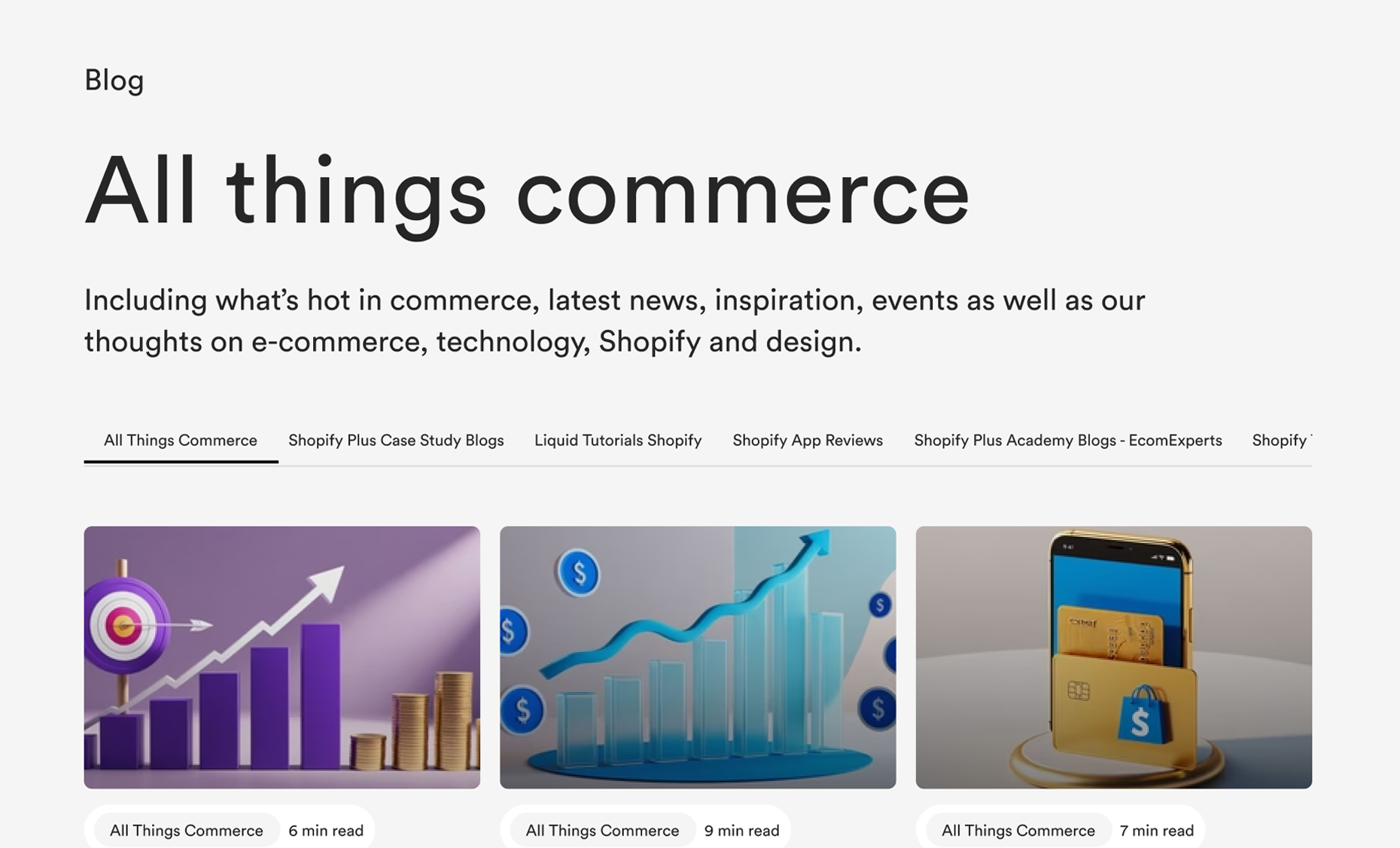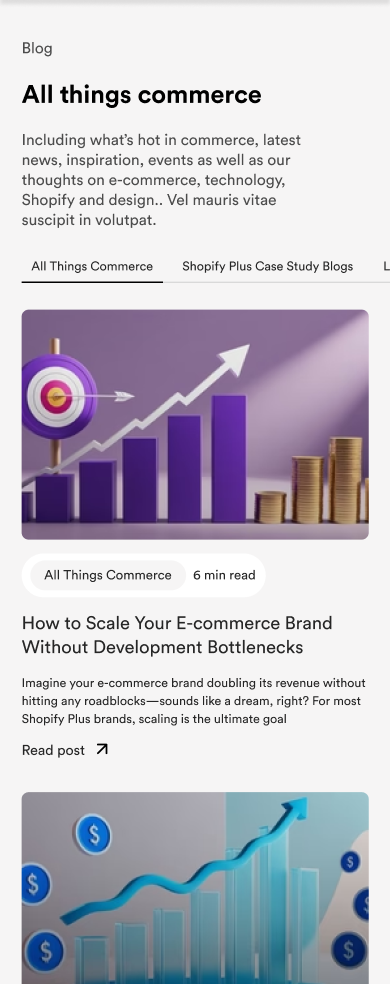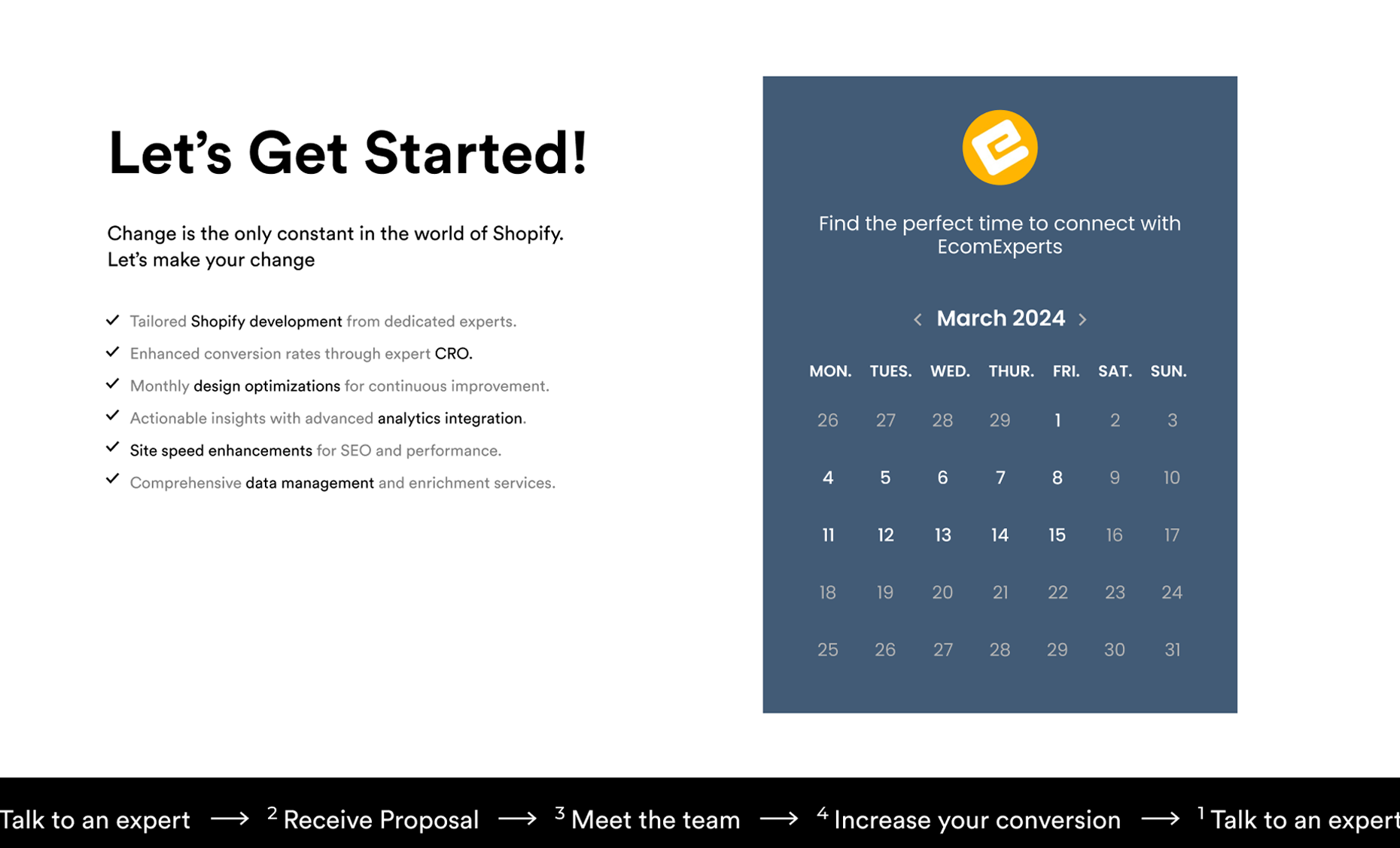Shopify Plus is an absolute powerhouse for scaling brands. It’s built to handle massive traffic, complex product catalogs, and the intense demands of fast-growing e-commerce businesses.
The platform offers everything a high-growth brand needs to dominate the market: from customizable checkouts to automation tools and third-party integrations that keep everything running smoothly.
But here’s the kicker: even the most powerful platform won’t save you from poor development decisions. In fact, a handful of small, often overlooked mistakes could be silently costing you thousands of dollars in sales.
That’s right. Everything from ignoring mobile optimization to overloading your store with unnecessary apps can leave money on the table and weaken your brand's impact.
For Shopify Plus brands, the stakes are even higher. When you're playing at this level, every technical misstep compounds, affecting everything from customer experience to site speed to checkout conversions. And with the fast-paced nature of e-commerce, there's no room for slow-loading pages, cluttered backends, or clunky checkouts. These aren't just small glitches—they're revenue killers.
So here’s the good news: EcomExperts specializes in finding and fixing these costly mistakes. Whether it’s streamlining your checkout process, optimizing your site speed, or implementing custom development that actually works, we’ve got you covered. With our three-tier development partnership, we give you the flexibility to scale your store without worrying about the technical missteps that could derail your success.
Mistake #1: Ignoring Mobile Optimization
Here’s a harsh truth: if your Shopify Plus store isn’t mobile-optimized, you’re missing out on serious money. More than 55% of global web traffic comes from mobile devices , and that number is only going up.
Yet, many Shopify Plus stores are still treating mobile as an afterthought, designing for desktop first and hoping the mobile experience “just works.” Spoiler alert: it doesn’t.
When mobile optimization is ignored, the user experience tanks, which directly impacts your conversion rate. Slow load times, poor mobile navigation, and clunky checkout processes drive mobile users away faster than you can say "cart abandonment." And trust me, they’re not coming back.
The Impact of Poor Mobile Optimization
We’re not talking about a small bump in sales here—this is huge. Studies show that 53% of users will abandon a mobile site if it takes longer than three seconds to load . That’s half your traffic, gone, because your site couldn’t keep up.
How to Fix It
- Responsive Design: Ensure your site is built with a mobile-first approach. Shopify Plus offers great themes, but many need customization to truly shine on mobile. Make sure your buttons are big enough to tap, your images load quickly, and your checkout process is seamless.
- Mobile Checkout Optimization: Don’t overlook the checkout process—it’s where most users drop off. Add Shopify Pay or Apple Pay to make checkout frictionless for mobile users. Shopify Plus offers custom checkout options to tweak and optimize the experience based on user behavior .
- Performance Testing: Regularly test your site’s speed using tools like Google PageSpeed Insights or GTmetrix. Identify bottlenecks such as unoptimized images or excessive app scripts. Shopify Plus users can also leverage Shopify's built-in performance monitoring tools to track mobile performance and make necessary adjustments .
By focusing on mobile-first design and checkout optimization, you can transform your Shopify Plus store into a conversion machine for mobile users. And if you're unsure how to get it right, EcomExperts can step in with custom solutions tailored to your store’s mobile performance.
Mistake #2: Overloading Your Store with Apps
Let’s face it—Shopify’s app ecosystem is amazing. Need a loyalty program? There’s an app for that. Want to enhance your email marketing?
There’s an app for that, too. But here’s the problem: too many Shopify Plus brands overload their stores with apps, thinking they’re quick fixes to performance issues or feature gaps.
What they don’t realize is that these apps can seriously drag down site speed, create security vulnerabilities, and even cause compatibility issues.
The Impact of App Overload
Every app you install adds a layer of code to your site, often loading additional scripts in the background.
The more apps you pile on, the slower your site becomes, directly affecting your site speed and SEO performance. Slow load times don’t just frustrate users; they lead to cart abandonment and a drop in rankings.
Not only that, but some third-party apps don’t play nice together. Conflicting code can cause bugs or break features, and you may not even know it until customers start complaining.
Worse, excessive apps can expose your store to security risks, especially if they don’t update regularly or handle sensitive customer data poorly.
How to Fix It
- Conduct an App Audit: Take inventory of all the apps installed on your Shopify Plus store. Which ones are essential? Which ones haven’t been used in weeks? By trimming the unnecessary apps, you’ll immediately boost site performance and reduce the risk of bugs and conflicts.
- Use Custom Development: Instead of relying on multiple third-party apps to achieve your desired functionality, consider custom development. With Shopify Plus, you have the flexibility to build custom features that don’t slow down your site.
- Regular App Updates: Ensure that the apps you do keep are regularly updated to avoid security vulnerabilities. Set reminders to review updates and check for any conflicts after new versions are installed. Shopify Plus also offers monitoring tools to identify underperforming apps that may be impacting site speed.
By keeping your app stack lean and opting for custom solutions, you’ll significantly improve site speed and enhance user experience, which translates directly into more sales.
Mistake #3: Poor Checkout Customization
Checkout is where the magic happens—or it doesn’t. The default Shopify Plus checkout process is powerful, but leaving it untouched is a huge missed opportunity.
Many brands neglect to customize their checkout and fail to optimize it for user experience, causing higher cart abandonment rates. Let’s be clear: the difference between a standard checkout and a tailored one could be the difference between customers finishing their purchase or walking away.
The Impact of Poor Checkout Customization
We’ve all been there—customers add items to their cart, but when they reach the checkout page, they drop off.
According to research, nearly 70% of shopping carts are abandoned, and a poor checkout experience is a major reason why. Lengthy forms, lack of payment options, or a checkout that feels clunky can all kill the sale at the last minute.
Shopify Plus allows for a customized checkout experience, but many brands fail to leverage this. The standard checkout works fine, but for enterprise-level businesses with complex customer needs, it falls short.
Features like Shopify Scripts, Shopify Flow, and custom upsell options can enhance the checkout, reduce friction, and create personalized experiences that keep customers moving toward the finish line.
How to Fix It
- Shopify Scripts for Custom Rules: With Shopify Scripts, you can tailor the checkout experience based on the customer’s behavior. For example, you can add automatic discounts, custom shipping options, or even free gifts for high-spending customers. Scripts help eliminate friction and improve the checkout process for your customers, leading to higher completion rates.
- Add More Payment Options: Offering limited payment methods can frustrate customers, especially those in international markets. Shopify Plus allows you to add multiple payment gateways like Shopify Payments, PayPal, Apple Pay, and more. Customizing your checkout to offer multiple options ensures customers can pay the way they prefer.
- Streamline the Checkout: Remove unnecessary fields and use auto-fill options to reduce customer effort. Studies show that streamlining checkout forms and removing distractions can significantly increase conversions. For enterprise brands, this can translate into millions of dollars in recovered revenue.
- Post-Purchase Upsells: Don’t stop at the purchase. With Shopify Plus, you can create post-purchase upsells—offering additional products after a customer has completed their initial order. These can be targeted and personalized, driving additional revenue with minimal extra effort.
Mistake #4: Skipping Performance Testing and Site Speed Optimization
You could have the most beautifully designed Shopify Plus store with an incredible product line-up, but if your site loads too slowly, customers won’t wait around.
In fact, 53% of mobile users will abandon a site if it takes longer than three seconds to load. So, ignoring site speed optimization? That’s basically saying goodbye to sales.
The Impact of Skipping Performance Testing
Here’s what happens when site speed is slow: your bounce rates spike, your SEO rankings tank, and your customers leave before they even browse. This doesn’t just hurt your conversions, it can directly impact your bottom line.
Shopify Plus brands, which often deal with large inventories, high traffic, and complex integrations, are particularly vulnerable.
Skipping performance testing and load optimization can result in longer load times, especially during high-traffic seasons like Black Friday or Cyber Monday. If you’re not stress-testing your store and optimizing for peak traffic, you’re risking massive revenue loss.
How to Fix It
- Use Shopify’s Built-In Performance Tools: Shopify Plus offers tools like Shopify Analyzer to help diagnose slow load times. Regularly run performance tests to understand which pages or elements are causing slowdowns.
- Optimize Images and Scripts: One of the most common culprits for slow websites is heavy images and bloated scripts. Compress images using tools like TinyIMG and Smush to reduce their size without losing quality. Also, limit the use of third-party scripts, which often load too many resources at once.
- Lazy Loading and CDN: Implement lazy loading to delay loading images or elements until they are needed, which can significantly speed up page load times. Using a Content Delivery Network (CDN) like Cloudflare helps ensure your content is delivered faster by storing it in multiple server locations across the globe.
- Regular Stress Testing: Especially during high-traffic periods, perform regular stress tests to ensure your store can handle large surges of traffic without crashing or slowing down. Shopify Plus can handle scale, but you need to regularly test it to ensure the infrastructure holds under pressure.
Making sure your store is optimized for speed and performance is one of the most effective ways to increase conversions and customer satisfaction.
Ensuring your site is fast, responsive, and ready for heavy traffic will allow you to focus on scaling your brand without worrying about revenue loss from slow load times.
Mistake #5: Failing to Fully Leverage Shopify Plus’s Automation Features
Shopify Plus offers a wealth of automation tools designed to streamline operations, reduce manual labor, and scale efficiently.
Yet, many brands underutilize these powerful features, often getting bogged down in repetitive tasks that could easily be automated.
For brands looking to grow rapidly, missing out on these automation tools means wasting time, losing productivity, and limiting growth potential.
The Impact of Not Automating Key Processes
The beauty of Shopify Plus lies in its ability to scale alongside your business. However, if you’re manually managing inventory, orders, or marketing campaigns, you’re not only slowing down your processes but also increasing the likelihood of human errors. These inefficiencies can have a compounding effect on your revenue, especially as your store grows.
Let’s say you’re still manually tagging customers for marketing campaigns or updating inventory across multiple channels. That’s time you could be spending on revenue-generating activities—and this is where Shopify Plus really shines with its automation features like Shopify Flow and Launchpad.
Flow allows you to automate backend processes such as order management and customer segmentation, while Launchpad can schedule product releases or flash sales. Not using these features? You’re missing out on automating tasks that could save your team hours of manual work every week.
How to Fix It
- Set Up Shopify Flow: Flow is a robust automation tool that allows you to create custom workflows based on triggers, conditions, and actions. For example, you can automatically tag high-value customers for VIP marketing campaigns, or trigger inventory updates when stock levels drop below a certain threshold. It’s a simple way to eliminate repetitive tasks and focus on growing your store.
- Leverage Launchpad for Sales Events: If you’re planning a big product launch or seasonal sale (think Black Friday/Cyber Monday), Launchpad automates the entire process. You can schedule everything from product visibility to discount application and even track the progress in real-time during the event.
- Integrate Third-Party Tools: Take automation further by integrating third-party tools with Shopify Plus’s APIs. Whether it’s automating customer emails via your CRM system or syncing your ERP for real-time inventory updates, you can link different systems for seamless operations.
- Custom Automation Solutions: If the native tools don’t cover your needs, consider building custom automation scripts tailored to your store’s unique requirements. This could be anything from automating custom discounts for specific customer segments to creating bespoke fulfillment workflows.
Using automation effectively allows you to scale your Shopify Plus store without adding more workload to your team.
Whether it’s automating your marketing, inventory management, or sales events, leveraging these tools will free up time for your team to focus on high-value tasks.
If you’re not sure how to start or need help setting up more complex workflows, working with a Shopify Plus expert can make all the difference.
Conclusion
Shopify Plus is a game-changing platform for scaling brands, but even the best tools can fall short when key development mistakes are made. From ignoring mobile optimization to underutilizing automation tools, each of these errors has the potential to silently drain your revenue and limit your growth potential.
The good news? Every mistake can be fixed. Whether you need to streamline your checkout process, optimize site speed, or eliminate unnecessary apps, taking action today can make a significant difference in both your user experience and bottom line. And as your Shopify Plus store continues to grow, having a trusted development partner can make sure you’re getting the most out of the platform.
At EcomExperts, we specialize in spotting these costly mistakes and implementing solutions that help Shopify Plus brands run faster, smoother, and more profitably. Let’s ensure your store is working for you—not against you.
FAQs
Q1. What are the most common Shopify Plus development mistakes?
Common Shopify Plus development mistakes include ignoring mobile optimization, overloading the store with unnecessary apps, not customizing the checkout process, skipping performance testing and site speed optimization, and underutilizing Shopify Plus’s automation tools like Flow and Launchpad. These mistakes can significantly impact your store’s conversion rates and revenue.
Q2. How can I optimize my Shopify Plus store for mobile users?
To optimize your Shopify Plus store for mobile, focus on responsive design, streamline the checkout process, compress images to improve load times, and ensure your site uses mobile-first principles. Incorporating Shopify Pay or Apple Pay can also reduce friction during checkout, increasing mobile conversions.
Q3. How do too many apps slow down my Shopify Plus store?
Each app you add to your Shopify Plus store increases the amount of code that must load, which can slow down site performance. Bloated scripts from unnecessary apps can also create conflicts, negatively impacting site speed and user experience. Regular app audits and switching to custom development can help streamline your store.
Q4. Why is site speed optimization crucial for Shopify Plus stores?
Site speed directly affects both SEO rankings and conversion rates. Slow-loading pages can lead to higher bounce rates and cart abandonment, especially on mobile. A delay of even one second in load time can reduce conversions by 7%, so optimizing for speed is critical to ensure smooth performance during high-traffic periods.
Q5. How can Shopify Plus automation tools improve my store’s performance?
Tools like Shopify Flow and Launchpad automate key tasks like order management, customer segmentation, and scheduling sales events. By automating these processes, you reduce manual work and minimize errors, which allows you to focus on growing your business more efficiently.





